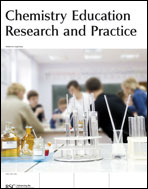Can animations effectively substitute for traditional teaching methods? Part II: Potential for differentiated learning
Abstract
Animations were prepared using Adobe Flash MX and tested on elementary (3rd – 5th grade) and secondary chemistry students. A pre- and post-test study was used to compare the learning gains of students who received the animations with those who received textbook reading time and discussion in class. The control and experimental groups were further divided between students who had low base knowledge and those with higher base knowledge, by comparing students above and below the median on their pre-test. The data analysis indicated that students with low base knowledge and who were given the animation treatment performed at the level of high base knowledge learners. This suggested that well-prepared animations have the capacity to provide differentiated learning for low base knowledge students.

 Please wait while we load your content...
Please wait while we load your content...